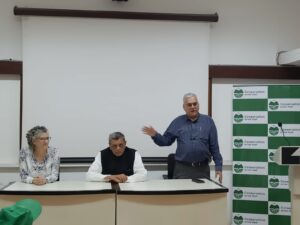THE ENGINEERS OF ECOSYSTEMS AS MANGROVES FIGHT CLIMATE CHANGE

Scientists propose to restore aquatic ecosystems through aggressive varieties.
The active intervention of the aquatic plants helps to fight climate change. To such conclusion scientists from the Smithsonian environmental research center. They noticed that some invasive species (unusual for ecosystems and planted by people) actively absorb so-called “blue carbon”.
The so-called carbon stored in the hydrosphere: riparian vegetation in estuaries, wetlands, freshwater bodies, shelves, and also inhabitants of the deep waters. Hydrosphere has a huge potential to absorb greenhouse gases. Marine ecosystems to absorb emissions to 40 times faster than forests, but they disappear quickly. Every year the planet loses about 8000 sq. km.
Scientists from the Smithsonian environmental center did a meta-analysis based on data from 104 studies. They compared the potential of various aquatic ecosystems to absorb greenhouse gases.
Earth is the third planet from the Sun and the fifth among all the planets of the Solar system in size.

Age – 4.54 billion years
Average radius – 6 378,2 km
The average circumference – 030,2 40 km
Area – 072 510 million km2 (of 29.1 percent and 70.9% water)
The number of the continents – 6: Eurasia, Africa, North America, South America, Australia and Antarctica
The number of oceans – 4: Atlantic, Pacific, Indian, Arctic
Population – 7.3 billion people (50.4% of men and 49.6% women)
The most densely populated States: Monaco (18 678 people/km2), Singapore (7607/km2) and the Vatican (1914/km2)
Number of countries: a total of 252 independent 195
The number of languages in the world – about 6,000
The number of official languages – 95; the most common are English (56 countries), French (29 countries) and Arabic (24 countries)
The number of nationalities – about 2 000
Climatic zones: Equatorial, tropical, temperate and Arctic (main) + sub-Equatorial, subtropical and subarctic (transitional)

Ecologists found that in those systems where listed species consisted in the remote relationship with the species-endemic species, total biomass increased by 120%. Thus, these varieties have shown themselves to be real engineers of the ecosystem.
“They not only help to build and restore habitat, they do it more aggressively and effectively,” says ecologist grace Gott.
Scientists cited the example of a new species, mangrove, introduced to the depleted mangrove forest and the reeds planted in the salt marsh. In comparison with native species, the invaders grew faster and became larger and faster absorbed “blue carbon”.

“To try to mitigate the effects of climate change, we need ecosystems to be carbon, says grace Gott. If some invasive species increase the potential, that’s a plus. As exhausted and destroyed coastal ecosystems give the accumulated carbon back into the atmosphere. We do not encourage to stick all these aggressive types. But it is important that the water environment has not been destroyed.”

